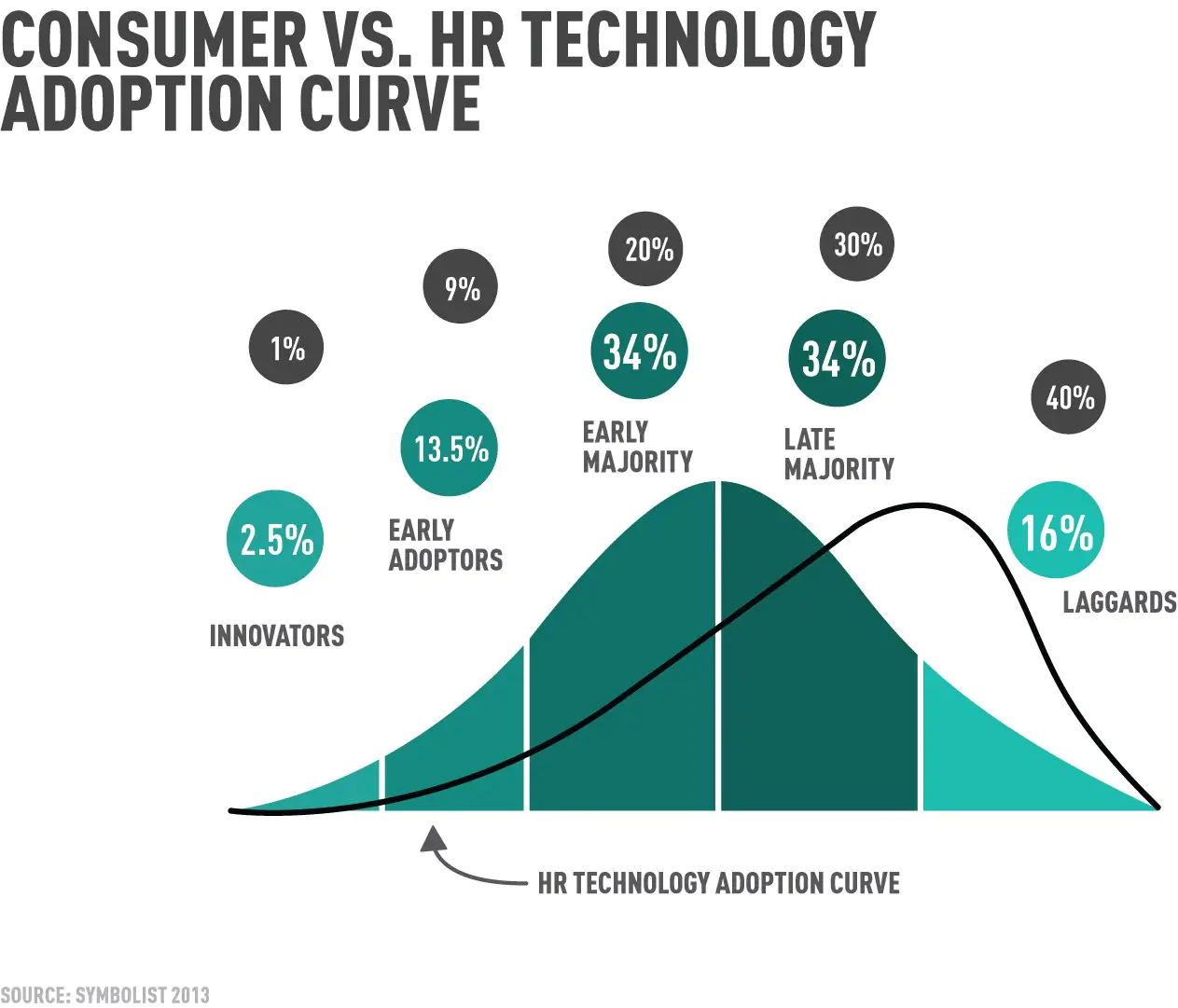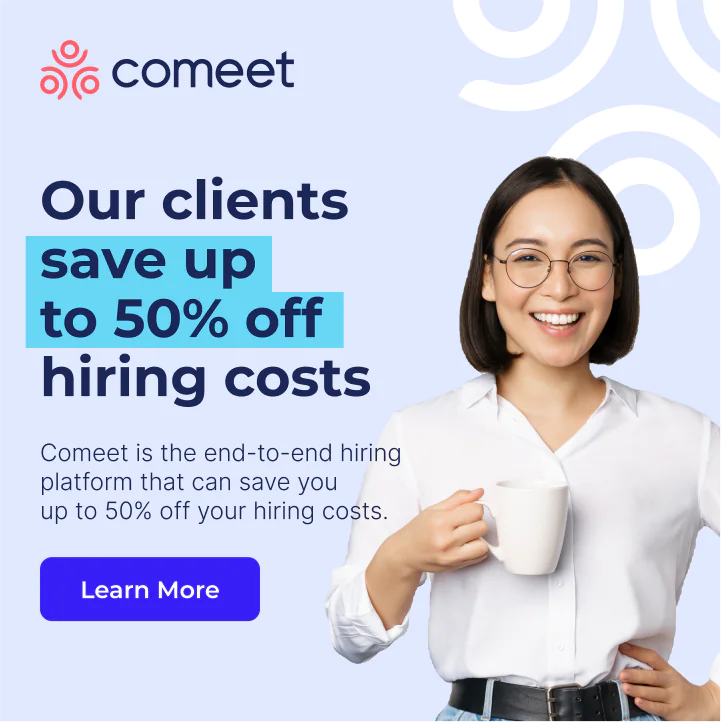Adopting technology just like making organizational changes and is only as good as the people who use it. So whether you are implementing an employee onboarding program, applicant tracking system like Comeet, or a new interview program, change is hard for most people. In this post, we’ll take a look at the change adoption process focusing on neuroscience.
This is part of an extensive series of guides about workforce management.
How Neuroscience Helps With Organizational Change
In this recent podcast, Dr. Britt Andreatta says that it is important for organizations and their leader to understand where each employee is on the change journey. She says that leaders who are involved in creating and building new organizational strategies have had time to adjust to the new change while employees often have not been given the time to consider, learn about and adjust to those same changes. This is one of the many situations where workplace neuroscience and leadership can help.
The Change Adoption Curve
The change adoption curve and the different types of players are going to make the most impact in driving technology adoption for organizations. Below, we’ll outline the most important factors based on neuroscience to consider when you’re gearing up to roll out new tech at your workplace.
1) People in your organization play different roles, which is why socialization is important.
Change is difficult for most people. Our brains are wired to want instant results, and the adoption of new technology is never instantaneous. It’s a process. As your company’s HR leader, you want to identify the ones whose brains work differently, the key players throughout your organization; the “cheerleaders” and the “helpers.” These are the people you see stop to help a coworker on another team with an issue—and it doesn’t have to be software-related. You’ll never hear “not my job” or “not my problem” from these personality types.
According to a 2016 article in Psychology Today, those who love change usually prefer attempting to change structures, processes or systems rather than people. They might be advocates of organizational learning or change management. Though there are those who are really committed to changing people through training, coaching, and mentoring, and they also prefer words like learning and development.
These types of employees are key to championing your tech adoption throughout your organization. They’re social, accustomed to working with and across teams, and extraordinarily helpful. Your new technology rollout needs a task force, and the cheerleaders are naturals. With a few weekly meetings and department-focused demos and training, they can be a force of nature and help your company drive HR technology adoption faster than you’d expect.
2) Technology adoption. It’s not just about Millennials.
At a SHRM annual conference presentation on behavioral change, Brad Karsh, president of Chicago-based JB Training Solutions, had five words of advice: Millennials can be your friends. In other words, said Karsh, those born between 1981 and 2000 are so accustomed to adapting, comfortable around authority figures and confident about asking questions that they may be best suited to lead older workers in embracing company change.
The HR professional’s job at this stage, said Karsh, is to inform, explain, communicate continually and be transparent about what to expect. For Millennials, whose parents tended to arrange their calendars, that means they’re looking to managers for answers. “When Gen X-ers and Boomers had a question at work, they were told to ‘figure it out,’ ” Karsh said. “Millennials love to ask questions. … [they] love to know why.” That means answering questions such as, “What does it mean for me?” “How soon will it happen?” “How will it affect my job?” “Will I get more money?” “Will I get training?”
3) Your company training and onboarding program for the technology.
This is where leadership begins. According to workplace neuroscience, for organizations to succeed and their employees to embrace change, organizational leaders must focus on their employee and help create new neuro-pathways for their employees in everything they do. In fact neuroscience training is a growing trend for the workplace. Human resource professionals and company managers must focus on the science of organizational change in everything they do from launching a new training program, workplace process, or employment video.
4) Treating your technology change like any change management process.
Workplace neuroscience experts, like Reut Schwarz-Hebron, say that with increased technology and recent breakthroughs on the science of the brain, we are gaining an understanding in how different parts of the brain function. The solution according to brain science lies in the development of new neuron pathways.
5) Internal marketing and communication campaigns.
Let’s call it “neuromarketing” (yes, that’s a word). Development of new pathways requires reinforcements of new behaviors. I see this similarly to starting a new exercise or workout program. You have an established response or routine that is defined by a pathway. In fact, it’s your go-to our default response. And to change your routine involves the creation of a new habit and pathways requiring learning, planning, interacting, positive recognition, and executing.
These are also things HR leadership and managers need to actively do to reinforce and positively affect change at the organization and by their employees. Internal marketing provides information, reminders, and training help to prevent change-resistant employees from slipping back into their old habits (or old technology).
6) Working in perpetual beta.
The key when implementing successful tech, says Jason Averbook, is to always be in perpetual beta, meaning that there is always change, improvements, and enhancements, just like you see in consumer technology. This move towards “perpetual beta” has happened because of new cloud-based workforce technologies making it easier to update, enhance and change the experience and structure for enterprise technology users.
With the nature of work today and in the future, change is imminent. Are you ready?
See Our Additional Guides on Key Workforce Management Topics
Together with our content partners, we have authored in-depth guides on several other topics that can also be useful as you explore the world of workforce management.
HR Recruitment Process
- How to Create An Effective Employee Selection Process
- 5 Different Types of Recruiting Software
- How to Effectively Promote Your Employee Referral Program
What is Onboarding
Authored by Hibob
- Four Onboarding Best Practices
- Successful Employee Onboarding Process + Checklists & Templates
- Remote Onboarding: the Complete Guide
Full Time Equivalent
Authored by Stoke
- What Does Full Time Equivalent Mean, and Why is it Important?
- How Do I Complete an FTE Calculation for My Business?
Are you looking to start your hiring process today? Comeet can help. Check out our plan options to learn more about how we can redefine the way you recruit new talent.






























